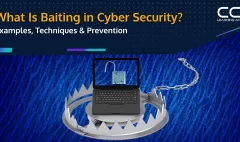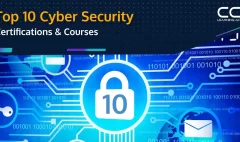Cybersecurity Risks Are Everywhere! Even When You’re Teleworking
Cybersecurity risk is the possibility of your company losing money as a result of a cyber-attack or data leak. An organization’s reputation, technological infrastructure, or technology use can be damaged if it suffers such a loss.
As businesses become more dependent on computers, networks, software, social media, and data around the world, they become more vulnerable to cyber-attacks. Teleworking adds another layer of risk to the equation.
Increasing global connections and the use of cloud services with weak default security standards are increasing the risk of cyber-attacks from outside your organization. Access control and IT risk management once sufficed, but now sophisticated cybersecurity specialists, software, and cybersecurity risk management are required.
Security protocols and IT personnel alone are not enough to maintain information security. To reduce your organization’s risk of cyber-attacks and identify attack surfaces, threat intelligence tools and security programs are essential.
In the event of a cyber-breach, decision-makers must put in place a cyber-incident response plan and assess the risks associated with third-party providers.
What is Cybersecurity?
Cybersecurity refers to tools, policies, and practices used to protect an organization’s intellectual property, customer data, and other sensitive information from unauthorized access by cyber criminals. Organizations must manage cybersecurity risks better as part of their enterprise risk profile as cybercrime becomes more common and more severe.
Any enterprise risk management process and everyday business activities should include cybersecurity planning regardless of risk appetite. It is a major threat to any business.
What is the Business Significance of Cybersecurity?
A cyberattack or breach on an organization’s network may result in asset exposure, sensitive information loss, or reputational damage. Assessing cybersecurity risk is often based on threat factors, types of vulnerabilities, and the implications of network interruptions.
In social engineering attacks, DDoS attacks, and advanced persistent threats (APTs), vulnerabilities are defects, errors, or weaknesses that attackers might exploit to gain unauthorised access. A breach of security may directly or indirectly impact an organization’s finances, operations, reputation, and regulatory compliance status, depending on the attack.
They also use newly developed technologies to gain access to a company’s systems to influence and exploit individuals through cyber-threats. When developing safety policies in response to the coronavirus pandemic, organisations must consider data protection and cybersecurity concerns.
Top 5 Cybersecurity Risks while Teleworking or Remote Working is in Place:
- Phishing Schemes
- Weak Passwords
- Unencrypted File Sharing
- Insecure Home Wi-Fi
- Working from Personal Devices
Several high-profile cyberattacks on critical U.S. infrastructure have brought conversations around network security to the fore for companies around the globe. According to Gartner, spending on information security and risk management services will reach $150 billion in 2021, up 12.4% from 2020. Companies are implementing strategies to attract, recruit, and retain top security talent.
In order to take advantage of this career growth opportunity, enroll in cybersecurity courses online that teach you how to protect computer operating systems, networks, and data from cyber attacks. You’ll discover how to monitor systems and mitigate threats when they occur.
It is oversimplified to analyze a cybersecurity certification course this way. In each module of a cybersecurity certification course, you’ll learn about a particular topic, but the overall goal is to develop the computing skills necessary to prevent attacks and protect data and privacy.
What You’ll Learn in an Online Cybersecurity Certification Course?
At CCS Learning Academy, we offer ISO/IEC 27032 Lead Cybersecurity Manager training to help you develop the expertise and knowledge needed to support an organization in implementing and managing a Cybersecurity program based on ISO/IEC 27032 and NIST Cybersecurity frameworks. You will gain a comprehensive understanding of Cybersecurity during this course, the relationship between Cybersecurity and other types of IT security, and the role stakeholders play in Cybersecurity.
You can apply for the “PECB Certified ISO/IEC 27032 Lead Cybersecurity Manager” credential after learning all the necessary concepts of Cybersecurity. With the PECB Lead Cybersecurity Manager Certificate, you will be able to show that you have the skills and expertise to support and lead a team in managing cyber security.
What are the Objectives of Cybersecurity Certification Course?
- To help you learn how to set up and operate a Cybersecurity Program according to the ISO/IEC 27032 and NIST Cybersecurity frameworks
- Examine the relationship between ISO 27032, NIST Cybersecurity Framework, and other standards and operating frameworks
- Develop expertise in you how to establish, implement, and manage a Cybersecurity program effectively within an organization by mastering the concepts, approaches, standards, methods, and techniques
- Help you to understand how to interpret ISO/IEC 27032 guidelines within the context of an organization
- Develop the necessary expertise for planning, implementing, managing, controlling and maintaining a Cybersecurity Program as specified by ISO/IEC 27032 and the NIST Cybersecurity Framework
- To help you become an expert in cybersecurity to provide advice to an organization
Want to drive deep into the world of cybersecurity today? Get the cybersecurity course outline brought to you by CCS Learning Academy that is designed to give you in-depth knowledge of cybersecurity, down to its intricacies.







